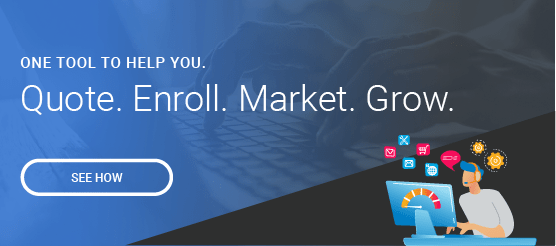
The future of telemedicine is looking bright — and emerging technologies are playing a huge role in the development of new kinds of care
As a consequence of the pandemic, the healthcare environment has been transformed. Many urban and rural hospitals have included telemedicine into their patient care paradigm, putting big tech with patient care and outcomes.
These six telehealth developments should be on your radar for 2023:
AI-Enabled Healthcare To Improve Outcomes
Are you aware of certain eye-opening statistics about artificial intelligence in healthcare? Are you interested in learning more about how artificial intelligence (AI) may be a major healthcare technology trend in 2022?
At a CAGR of 38.1% between 2021 and 2030, Allied Market Research predicts that AI in the healthcare business will reach a total value of $194.4 billion. The healthcare business is being revolutionized by artificial intelligence, which is solving several significant issues. AI has made it easier for healthcare workers to concentrate on patient care rather than administrative responsibilities and may also have an influence on several sectors, including:
- Reducing Clinical Mistakes
- Diagnosis with high precision
- Health Monitoring of the patients
- Automated Documentation of Medical Reports
- Improved efficiency
- Lower operational expenditure
- Automated Diagnosis Report Generation
Remote Patient Monitoring (RPM)
Remote Patient Monitoring has been on trend watch for more some time now. A subset of telehealth, RPM encompasses medical techniques that depend on equipment such as blood pressure monitors, implanted devices, and sensors. These gadgets gather data about patients passively. RPM is used for patients who have been released from hospitals but must return for regular examinations.
RPM technology enables healthcare workers to discover and evaluate patient data generated via devices and take appropriate action based on the analytics. Additionally, these gadgets assist patients in obtaining data by collecting biometric information, symptoms, health history, and lifestyle information.
Chronic care management requires extensive monitoring in order to prevent patients from entering an emergency. It is critical to include them in healthcare route monitoring to keep them healthy. A few start-ups are offering RPM to big healthcare organizations and individual practitioners. With the Centers for Medicare & Medicaid Services (CMS) announcing new programs in 2022 for Remote Therapeutic Monitoring and Remote Patient Monitoring, usage may expand to support value-based care.
Remote patient monitoring (RPM) enables people to control their health better and take an active role in their treatment.
When Something Significant Occurs, There Is Significant Data Left Behind
Healthcare is not unfamiliar with big data. Like any other sector, healthcare has issues in coping with the amount, diversity, and velocity of data — in this case, data that us generated by Electronic Health Records (EHR), wellness monitors, medical diagnostics, and nurse triages.
Big Data assists in identifying health trends and providing patients with timely and trustworthy answers about healthcare results, experience, and wellbeing. Due to the exponential growth of data, Big Data and its multiple use cases are predicted to be among the top healthcare technology trends in 2022.
With the rising popularity of wellness monitoring, wearable devices, and health data tracking, healthy data is immense. By analyzing this data in 2022, it is possible to cut treatment costs, prevent readmissions, and improve care quality.
Robotic Process Automation (RPA)

Experts say integrating Robotic Process Automation (RPA) into the healthcare business will help enhance physicians and improve their operations by automating time-intensive and repetitive tasks, helping to increase healthcare access and incomes as a result.
The following are some examples of how RPA integration is currently being used in healthcare:
- Enhancing data extraction and streamlining the handling of patient information
- Effectively scheduling new patient visits
- Streamlining and clarifying the claims process via data processing acceleration
- Error reduction
Gartner predicts that over half of all providers will invest in RPA in the next three years. In 2022, RPA solutions are predicted to expand beyond efficiency, making it easier and quicker for healthcare businesses to manage patient loads and care management.
Digital Therapeutics
“Digital Therapeutics” is a term that refers to an empirically supported behavioral therapy that is provided to patients through any program. Digital therapeutics systems monitor medicine, food, blood pressure, blood sugar, and exercise to enhance patient care. This exciting and evolving area of healthcare technology is anticipated to improve healthcare access and effectiveness.
Digital therapeutics-led initiatives will likely guide treating a few common illnesses, using simulation platforms to increase behavioral changes, and interacting with embedded medical trackers. Trackers such as heart defibrillators and blood glucose monitors will be used to transform care with negligible professional assistance.
By 2025, Insider Intelligence estimates that the worldwide DTx business will be worth $56 billion.
Technology-enabled telehealth trends will continue to impact multiple areas of healthcare in 2023, and these trends should be on the radar of every insurance agent and broker in 2023.
Quotit’s expansive coverage includes partnerships with hundreds of the nation’s leading health insurance carriers, including those embracing robust emerging new types of care in their plan
-1.png?width=1920&height=1200&name=QT-Logo-Big%20(1920)-1.png)



